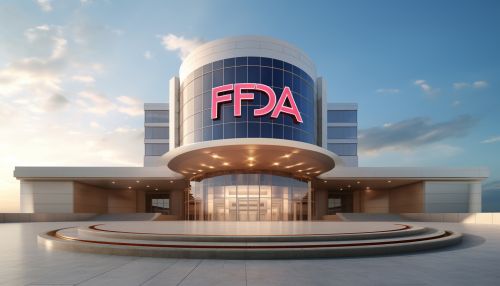Food and Drug Administration (FDA)
Overview
The Food and Drug Administration (FDA) is a federal agency of the United States Department of Health and Human Services. The FDA is responsible for protecting and promoting public health through the control and supervision of food safety, tobacco products, dietary supplements, prescription and over-the-counter pharmaceutical drugs (medications), vaccines, biopharmaceuticals, blood transfusions, medical devices, electromagnetic radiation emitting devices (ERED), cosmetics, animal foods & feed and veterinary products.


History
The FDA's origins can be traced back to the appointment of Lewis Caleb Beck in the Patent Office around 1848 to carry out chemical analyses of agricultural products, a function that the newly created Department of Agriculture inherited in 1862. Although it was not known by its present name until 1930, FDA's modern regulatory functions began with the passage of the 1906 Pure Food and Drugs Act, a law a quarter-century in the making that prohibited interstate commerce in adulterated and misbranded food and drugs.
Organization and Structure
The FDA is an agency within the Department of Health and Human Services and consists of nine main divisions. The Office of the Commissioner oversees all aspects of the FDA's functions, while the four directorates oversee the agency's various programs, including medical products and tobacco, foods and veterinary medicine, global regulatory operations and policy, and operations.
Functions and Responsibilities
The FDA's primary focus is enforcing the Federal Food, Drug, and Cosmetic Act. The agency ensures the safety of all food except for meat, poultry, and certain egg products; ensures the safety and effectiveness of all drugs, biological products (including blood and vaccines), medical devices, and radiation-emitting devices; regulates the manufacturing, marketing, and distribution of tobacco products; and ensures the safety of cosmetics and dietary supplements.
Regulatory Procedures
The FDA follows several steps in the process of drug approval. This process includes preclinical testing, an investigational new drug application (IND), Phase 1-3 clinical trials, a new drug application (NDA), FDA post-market safety monitoring, and FDA regulation of over-the-counter drugs.
Criticisms and Controversies
The FDA has been the subject of numerous criticisms and controversies over the years. These have ranged from allegations of regulatory capture, where the agency serves the interests of the industries it is supposed to regulate rather than the public's interest, to criticisms of the speed and effectiveness of the drug approval process.
